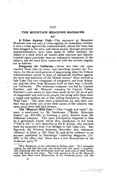
[p. 129]
XIII.
THE MOUNTAIN MEADOWS MASSACRE.
1857.
A Crime Against Utah.—The massacre at Mountain Meadows was not only a crime against its immediate victims; it was a crime against the commonwealth, whose fair fame was thus dragged in the mire, and whose people, through persistent misrepresentation, have been made to suffer unjustly the odium of a deed which all classes alike execrate and deplore. Limited space precludes here an exhaustive treatment of the subject, but the main facts connected with the terrible tragedy are as follows.
Emigrants for California.—About the time the news reached Utah that an army was marching toward the Territory, for the avowed purpose of suppressing what the Federal Administration styled "a state of substantial rebellion against the laws and authority of the United States," there arrived at Salt Lake City two companies of emigrants, one from Arkansas, and the other from Missouri, both on their way to Southern California. The Arkansas company was led by Captain Fancher, and the Missouri company by Captain Dukes. Fancher's train seems to have been made up for the most part of respectable and well-to-do people, but along with them went a rough and reckless set of men calling themselves "Missouri Wild Cats." The latter were a boisterous lot, and their conduct was probably one of the chief causes of the calamity that came upon them and their betters.
The "Missouri Wild Cats."—This "rough and ready" element is mentioned by Mr. Stenhouse ("Rocky Mountain Saints," pp. 424-428) as forming a party distinct from the Arkansas company. This upon information imparted to him by a gentleman friend, whom Mrs. Stenhouse, in her book ("Tell it All," p. 325) identifies as Eli B. Kelsey, who traveled with the emigrants from Fort Bridger to Salt Lake City. But Bancroft, the Western historian, discredits this statement (History of Utah, p. 545, Note 3), and gives credence to an account published in Hutchings' California Magazine (IV. 345) to the effect that "there were a few Missourians in the Arkansas party."*

[p. 130]
Southern Route Chosen.—The emigrants remained several days, encamped near the Jordan River, undecided as to whether they should take the northern or the southern route, in continuing their journey westward. Charles C. Rich, one of the "Mormon" leaders, who was well acquainted with the country ahead of the travelers, advised them to pursue the northern route, by way of Bear River and the Humboldt. The Arkansas company, acting upon this advice, went as far as Bear River, and then returned, having decided after all to follow the southern trail, it being nearer to their destination. Both companies proceeded southward, with the Arkansas emigrants in the lead. They traveled by way of Provo, Springville, Payson, Fillmore, and the smaller settlements beyond.
C. C. RICH.
A black and white portrait of C. C. Rich.Rescued by "Mormons"—The Dukes company was delayed by trouble with the Indians, one of whom they shot; two of their number being wounded in return. This occurred near Beaver, a new settlement between Fillmore and Parowan.* Attacked by the red men, these emigrants were compelled to corral their wagons and seek protection in a rifle pit. Through the intervention of Utah militia officers—"Mormons"—the Indians were placated and the emigrants allowed to proceed. When beyond the last of the line of settlements, they were again attacked and again saved, the mediators being "Mormon" guides and interpreters, who persuaded the Missourians to buy off the savages with
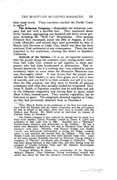
[p. 131]
their loose stock. These travelers reached the Pacific Coast in safety.*
The Arkansas Company.—Meanwhile the Arkansas company had met with a horrible fate. They numbered about thirty families, aggregating one hundred and thirty-seven persons, including the "Wild Cat" Missourians. After passing Fillmore they encamped, about the 20th of August, at Corn Creek (Kanosh), and several days later proceeded by way of Beaver and Parowan to Cedar City, which was then the most southern Utah settlement of any consequence. There the trail branched to the southwest, crossing the desert to Southern California.
Attitude of the Settlers.—It is an oft-repeated assertion that the people along the southern route, acting under orders from Salt Lake City, refused to sell supplies to these emigrants, who had been foredoomed to destruction. This infamous falsehood—for it is nothing else—was refuted by sworn testimony taken in court when the Mountain Meadows case was thoroughly sifted. It was shown that the people were advised by their leaders to save their grain, as it was a time of scarcity, and not feed it to their animals, nor sell it to travelers for that purpose; but they were to furnish all passing companies with what they actually needed for breadstuff. Hon. Jesse N. Smith, of Parowan, testified that he sold flour and salt to the Arkansas emigrants, and having flour to spare, asked them if they wanted more. They wanted vegetables, but he had none to spare. The emigrants obtained supplies at Cedar, as they had previously obtained them at Parowan.†
*Hon. Silas S. Smith, in his testimony at the first Lee trial, mentions both the Fancher and the Dukes companies, and the part played by him in behalf of the latter, when they were in trouble with the Indians near Beaver. Mr. Smith acted as intervenor by request of Colonel Dame, at Parowan.
The Dukes company is also referred to, though not by name, in a little book entitled "Jacob Hamblin" edited by James A. Little and published at Salt Lake City in 1881. Hamblin was a "Mormon" frontiersman, explorer, and missionary to the Indians. He had a ranch near Mountain Meadows, but was in Northern Utah when the massacre took place. Hamblin, with Samuel Knight and Dudley Leavitt, was afterwards instrumental in saving the Dukes company when it was attacked the second time by Indians. This was on Muddy Creek, one hundred and fifty miles beyond Cedar City. Later in the same autumn Hamblin, directed by Governor Young, piloted a-company of "Gentile" merchants safe through to California. They had been doing business at Salt Lake City, and were fleeing from the prospect of trouble between Utah and the General Government. ("Jacob Hamblin," pp. 46-48.)
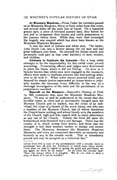
[p. 132]
At Mountain Meadows.—From Cedar the travelers passed on to Mountain Meadows, thirty or forty miles from that town, and several miles off the main line of travel. On a beautiful grassy spot, a piece of elevated pasture land, they halted for rest and to recuperate their horses and cattle preparatory to the journey before them. While they were thus encamped the tragedy was enacted which has since been known as the Mountain Meadows Massacre.
It was the deed of Indians and white men. The leader, John Doyle Lee, was a farmer among the red men and had great influence over them. He directed the Indian attack, and personally took part in that cruel butchery of men, women, and children.
Attempts to Implicate the Innocent.—For a long while attempts to fix the responsibility for this awful crime proved unavailing. Prosecuting officers and judges were determined to place the blame where it did not belong. As soon as it became known that white men were engaged in the massacre, efforts were made to implicate persons who had nothing whatever to do with it. When sober reason asserted itself, and a demand for simple justice superseded an insane desire to judicially murder the innocent, every difficulty in the way of a thorough investigation of the deed and the punishment of its perpetrators vanished.
Bancroft on the Massacre.—Bancroft's History of Utah (p. 544) comments thus upon the Mountain Meadows Massacre: "It may as well be understood at the outset that this horrible crime, so often and so persistently charged upon the Mormon Church and its leaders, was the crime of an individual, the crime of a fanatic of the worst stamp, one who was a member of the Mormon Church, but of whose intentions the Church knew nothing, and whose bloody acts, the members of the Church, high and low, regard with as much abhorrence as any out of the Church. Indeed, the blow fell upon the brotherhood with threefold force and damage. There was the cruelty of it, which wrung their hearts; and there was the strength it lent their enemies further to malign and molest them. The Mormons denounce the Mountain Meadows Massacre, and every act connected therewith, as earnestly and honestly as any in the outside world. This is abundantly proved and may be accepted as a historical fact."
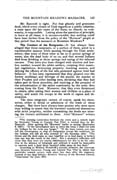
[p. 133]
Mr. Bancroft is right. For that ghastly and gruesome deed, which every citizen of Utah regards as a public calamity, a stain upon the fair name of the State, no church, no community, is responsible. Letting alone the question of principle, in force at all times, it is incontrovertible that nothing could have been farther from the policy of the "Mormon" people at that period than the massacre at Mountain Meadows.*
The Conduct of the Emigrants.—It has always been alleged that these emigrants, or a portion of them, acted in a reprehensible manner while passing through the Utah settlements; that some of them went so far as to poison springs of water, also the dead body of an ox, and that several Indians died from drinking at those springs and eating of the infected carcass. They have also been charged with insolent and lawless conduct toward the white settlers, violating their municipal regulations, destroying property, insulting women, and defying the officers of the law who protested against their bad behavior. It has been represented that they gloated over the former mobbings and drivings of the people, the murder of their Prophet and other leading men, declaring that they had taken part in those atrocities, and rejoicing at the prospect of the extermination of the entire community by the army then coming from the East. Moreover, that they even threatened to return, after taking their women and children to a place of safety, and assist the troops in the work of rapine and destruction.
The slain emigrants cannot, of course, speak for themselves, either in denial or admission of the truth of these charges. But there have always been proxies who were more than willing to assert that the travelers conducted themselves with strict propriety, neither committing the deeds nor uttering the threats attributed to them. Anti-"Mormon" writers
*The seeming connection between the crime and a remark made by Governor Young to Captain Van Vliet, is treated thus by Mr. Bancroft. After quoting the "Mormon" leader as saying (September 9. 1857): "If the Government dare to force the issue, I shall not hold the Indians by the wrist any longer." "If the issue comes, you may tell the Government to stop all emigration across the continent, for the Indians will kill all who attempt it," the historian adds: "The threat and the deed came so near together as to lead many to believe that one was the result of the other. But a moment's reflection will show that they were too nearly simultaneous for this to be the case; that in the absence of telegraph and railroad it would be impossible to execute such a deed three hundred miles away in two days."
According to Wilford Woodruff's journal, however, the conversation between Governor Young and Captain Van Vliet in which that particular remark occurs, took place two days after the massacre, instead of two days before.—Roberts' History of the Mormon Church, "Americana" for June, 1913.
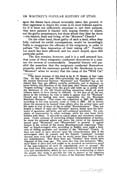
[p. 134]
upon the theme have almost invariably taken this ground, in their eagerness to depict the crime in its most hideous aspects. As if it were not sufficiently atrocious to suit their purpose, they have painted it blacker still, hoping thereby to injure, not the guilty perpetrators, but those whom they hate far more —the leaders, dead and living, of the "Mormon" Church.*
On the other hand, those guilty of such a deed, when they fully realized its awful consequences, would be exceedingly liable to exaggerate the offenses of the emigrants, in order to palliate "the deep damnation of their taking off." Possibly too much has been affirmed, and too much denied, upon this particular point.
The fact remains, however, and it is a well attested fact, that some of those emigrants conducted themselves in a manner the reverse of commendable. Impartial history will parallel the assertion that the emigrants conducted themselves properly, with the statement quoted by Mr. Stenhouse (a non-"Mormon" when he wrote) that the camp of the "Wild Cat"
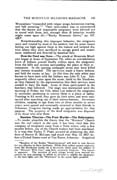
[p. 135]
Missourians "resounded with vulgar songs, boisterous roaring, and 'tall swearing.'" Their misconduct was so pronounced that the decent and respectable emigrants were advised not to travel with them, lest, through their ill behavior, trouble might come upon all.—"Rocky Mountain Saints," pp. 427, 428*
Notwithstanding this improper behavior, the emigrants were well treated by most of the settlers; but for some reason feeling ran high against them in the remote and isolated district where they were sacrificed to savage greed and resentment, reinforced and directed by fanatical fury.
How the Deed was Done.—The attack at Mountain Meadows began at dawn of September 7th, when an overwhelming force of Indians poured deadly volleys upon the emigrants, from the hills and ravines surrounding the place of their encampment. In the opening onslaught seven men were killed and sixteen wounded. The survivors made a brave defense, and held the enemy at bay. At this time the only white man known to have been with the Indians was John D. Lee. Subsequently others came upon the scene, lured to the Meadows, as they claimed, by the representation that their services were needed to bury the dead. Some of them participated in the butchery that followed. The siege was maintained until the morning of Friday the 11th, when Lee induced the emigrants to surrender, promising to convey them to a place of safety. Trusting in his word, they gave up their arms, and were massacred after marching out of their entrenchments. Seventeen children, ranging in age from two or three months to seven years, were spared and eventually returned to their friends in Arkansas, Congress having made an appropriation for that purpose. The property of the dead emigrants was disposed of by those who slew them.
Baseless Theories—The Pratt Murder—The Reformation.—To render plausible the theory that the "Mormon" Church was the real culprit in the case, it has been cited that this company of emigrants came from a State where, only a few months before, one of the Church leaders had been murdered. It is true that Parley P. Pratt, accused of abducting the children of Hector H. McLean, had stood trial, May 13, 1857, before a United States court at Van Buren, Arkansas. Acquitted
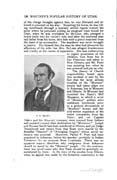
[p. 136]
of the charge brought against him, he was liberated and allowed to proceed on his way. Mounting his horse, he was riding northward through a sparsely settled region toward the point where he purposed joining an emigrant train bound for Utah, when he was overtaken by McLean, who plunged a bowie knife into his victim's side, and after the unarmed man had fallen from his horse, shot him with a pistol snatched from the hand of an accomplice. The murderer was never brought to justice. He claimed that the man he slew had alienated the affections of his wife; but Mrs. McLean alleged drunkenness and cruelty as the causes of separation. She was endeavoring to regain possession of her children, torn from her in San Francisco and taken to New Orleans, and Mr. Pratt was assisting her, when he was arrested and put on trial.
The theory of Church responsibility based upon this incident is met by the fact that the most serious troubles of the "Mormon" people had taken place not in Arkansas, but in Missouri and Illinois. In Missouri had occurred the Haun's Mill Massacre, in which a score of "Mormon" settlers were ruthlessly butchered, prior to a general devastation of "Mormon" homes and the mid-winter expulsion of the entire community from the State; and yet Captain Dukes and his Missouri company were rescued from Indians and assisted toward their destination by "Mormons." Joseph and Hyrum Smith had been murdered in Illinois, and yet Judge Drummond and others from that State were spared by the dreadful "Danites" or "Avenging Angels," whose secret existence was asserted. Moreover, Parley P. Pratt had been acquitted in Arkansas, before his murder—probably in Indian Territory—by an assassin from Louisiana. There was no apparent reason, therefore, why emigrants from Arkansas should be hated by the "Mormon" people. On the contrary, there was good cause why that State should be gratefully remembered by them. At the time of the exodus from Illinois, when an appeal was made by the homeless community to the
P. P. PRATT.
A black and white portrait of P. P. Pratt.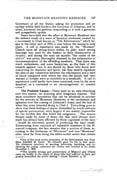
[p. 137]
Governors of all the States, asking for protection and an asylum within their borders, the Governor of Arkansas, and he alone, answered the petition, responding to it with a generous and sympathetic epistle.
Some have held that the affair at Mountain Meadows was the indirect result of a wave of fanatical sentiment created by a movement in Utah known as "The Reformation," which began in the latter part of 1856, a year before the massacre took place. A call to repentance was made by the "Mormon" Church upon all wrong-doers within its pale; much strong language was used by the leaders in their denunciation of iniquity; and during the next six months "the inside of the platter" was pretty thoroughly cleansed by the reclamation or excommunication of the offending members. That there was much enthusiasm, and some fanaticism, as the fruit of this crusade against vice, is not denied by those who know best concerning its character and spirit; but they utterly repudiate the idea of any connection between the reformation and a deed of blood compared with which the sins the people had been warned to forsake were as molehills to a mountain. A call to repentance could hardly have been construed, even by the most fanatical, as a command or an encouragement to commit crime.*
The Probable Causes.—There need be no vain theorizing over this matter—no straining after imaginary reasons. The most consistent hypothesis that can be advanced to account for the atrocity at Mountain Meadows, is the excitement and agitation over the coming of Johnston's Army; and the fear of what that army intended doing in Utah.† Everything goes to show that these feelings of alarm, intensified by words and acts of special provocation, were largely if not mainly responsible for the terrible fate that befell the emigrants. The unwise threats made by some of them—for that such threats were made has always been affirmed by those cognizant of the facts —would be extremely potent in producing the fatal result. Exonerating from reproach all reputable members of the ill-starred company, the fact remains that a portion of them, according to the testimony of "Mormons" and non-"Mormons" alike, were far from being the white-souled saints that certain
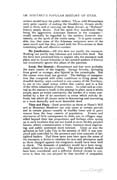
[p. 138]
writers would have the public believe. Those wild Missourians were quite capable of making the bloodthirsty threats attributed to them, and of carrying out those threats, as "Mormon" history amply shows. And the spirit they manifested—they being the aggressive, dominant element in the company— would naturally be regarded by the settlers, however mistakenly, as the spirit of the entire camp. It is quite conceivable, too, that some of the Arkansas emigrants were of the same mood, and that they joined with the Missourians in their tantalizing talk and offensive conduct.
No Justification.—All this does not justify the massacre. Nothing can justify that inhuman and indefensible deed. But the facts here presented help to explain why the massacre took place, and no honest historian or fair-minded student of history can consistently ignore this phase of the question.
Local, Not General.—Resentment and fear were probably the main causes of the tragedy, Savage ferocity, springing from greed or revenge, also figured in the catastrophe. But the causes were local, not general. The feelings of exasperation that conspired with other conditions to bring about the dreadful fatality, were confined to one county of the Territory, to one or two small towns within that county, and to a few of the white inhabitants of those towns. As cruel and as criminal as the massacre itself, is the attempt to place upon a whole people, upon an entire community, the burden of a crime committed by a few of its members—a crime which nobody defends, but which all classes unite in denouncing and execrating as a most dastardly and most damnable deed.
Time and Place.—Such atrocities as those at Haun's Mill and at Mountain Meadows can only occur at certain periods and in certain places—usually in warlike times and in parts remote from the busy centers of population. Events and utterances of little consequence in cities, are, in villages, magnified beyond their due proportions, and feelings often spring up in such localities that are not found in more thickly peopled haunts, where communication is freer, business more engrossing, and public sentiment more tolerant. Great as was the agitation at Salt Lake City in the autumn of 1857, it was tempered and controlled by the presence and wise counsels of far-sighted leaders. Had these same men been upon the scene of the massacre, a desire to retaliate for acts and utterances such as those charged against the emigrants would have been held in check. The demands of prudence would have been recognized, whatever the provocation. The general welfare would have been considered, and a different method chosen to conserve it, than the one adopted by that handful of misguided
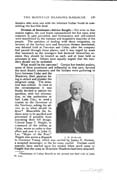
[p. 139]
fanatics who were one with the infuriate Indian horde in committing the horrible deed.
Division of Sentiment—Advice Sought.—Yet even in that remote region, the cool heads outnumbered the hot ones, wise counsels in part prevailed, and forbearance and self-control were manifested by the humane and hospitable majority of the people. The question of dealing with these emigrants, on account of the lawless acts and ferocious threats mentioned, was debated both at Parowan and Cedar, after the company had passed through those places; and it was urged by some that inasmuch as the strangers had declared themselves enemies they should be treated as such, and at least held as prisoners of war. Others were equally urgent that the travelers should not be molested.
What would be the outcome? Certain hot-headed zealots, some of them prominent and influential in that part, favored the most drastic measures, and the Indians were gathering in force between Cedar and the Meadows, their purpose being to attack and plunder the emigrant camp. The situation was critical. In view of the circumstances it was finally decided to submit the question, with full information, to the authorities at Salt Lake City; to send a courier to the Governor of the Territory, asking his advice as to what should be done.* Meanwhile the Indians were to be pacified and prevented if possible from executing their fell design. Colonel Isaac C. Haight, in command of the militia at Cedar, wrote an order to that effect and sent it to John D. Lee. "Major of the Post." Haight also wrote a dispatch
J. H. Haslam.
A black and white portrait of J. H. Haslam. to Governor Young, which was carried by James H. Haslam, a mounted messenger, to the far away capital. Haslam could scarcely have started upon his errand when word came to Haight that the camp at Mountain Meadows had been attacked,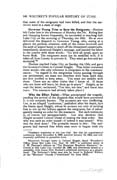
[p. 140]
that some of the emigrants had been killed, and that the survivors were in a state of siege.
Governor Young Tries to Save the Emigrants.—Haslam left Cedar late in the afternoon of Monday the 7th. Riding fast and changing horses frequently, he succeeded in reaching Salt Lake City on the morning of Thursday the 10th. He at once delivered the dispatch to Governor Young, who, seeing at a glance the perilous situation, with all the issues involved, and the need of urgent haste to ward off the threatened catastrophe, immediately answered Haight's message, and handed the letter to the courier with these words: "Go with all speed, spare no horse flesh. The emigrants must not be meddled with, if it takes all Iron County to prevent it. They must go free and unmolested."*
Haslam reached Cedar City on Sunday the 13th, and gave the Governor's letter to Colonel Haight. That letter contained these words—the only reference to emigrants in the communication: "In regard to the emigration trains passing through our settlements, we must not interfere with them until they are first notified to keep away. You must not meddle with them. There are no other trains that I know of. If those who are there will leave, let them go in peace." Haight, as he read the letter, exclaimed, "Too late, too late," and burst into tears. The massacre had already taken place.†
Why the Effort Failed.—What precipitated the tragedy, pending the arrival of the dispatch that would have prevented it, is not certainly known. The accounts are very conflicting. Lee, in an alleged "confession," published after his death, lays the blame upon Haight, whom he accuses not only of inciting him to stir up the Indians against the emigrants, but of subsequently issuing an order for the massacre. But such testimony is, of course, not unimpeachable. Lee also declares that Haight accused Colonel Dame of issuing the fatal order. But why was such an order issued—if indeed it was issued? Why was the deed done? The probable reason is this: The emigrants had learned that white men were in league with the
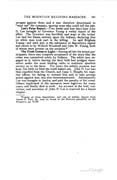
[p. 141]
savages against them, and it was therefore determined to "wipe out" the company, sparing none who could tell the tale.
Lee's False Report.—Two weeks and four days later John D. Lee brought to Governor Young a verbal report of the affair. The Governor was horrified, and wept at the recital. Lee laid the blame entirely upon the Indians, declaring that no white man took part in the killing. So said Brigham Young; and such also is the substance of depositions signed and sworn to by Wilford Woodruff and John W. Young, both of whom were present on the occasion.*
The Truth Comes to Light.—Among all but the actual participants, there was complete acceptance of the story that the crime was committed solely by Indians. The white men engaged in it, before leaving the fatal field had pledged themselves under the most binding oaths to maintain absolute secrecy as to the facts. For years the unholy promise was kept; but little by little the truth leaked out. John D. Lee was then expelled from the Church, and Isaac C. Haight, his superior officer, for failing to restrain him and to take prompt action against him, was also excommunicated. Subsequently Lee was brought to justice, and paid the penalty of his crime. Others implicated in the massacre were fugitives for many years, and finally died in exile. An account of the trial, conviction, and execution of John D. Lee is reserved for a future chapter.